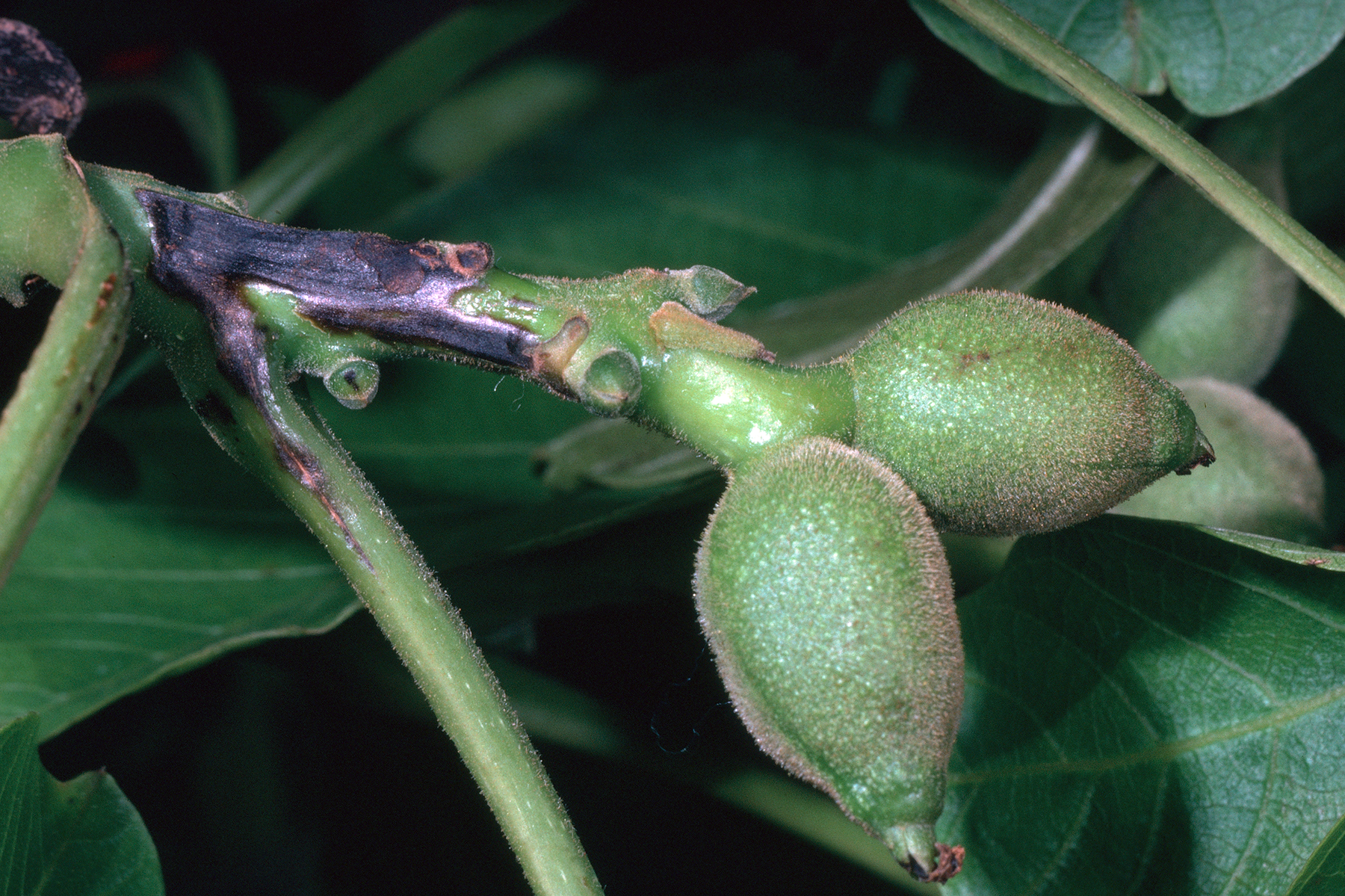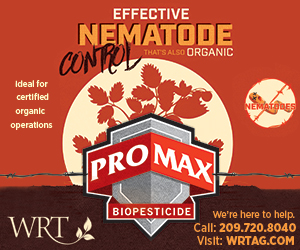
A survey of 43 walnut orchards in San Joaquin and Stanislaus counties produced significant findings about the canker and blight diseases caused by Botryosphaeria and Diaporthe (Phomopsis) spp fungi.
These infections are increasing in walnut orchards across most California walnut growing regions, said UCCE farm advisor Mohamad Nouri.
Environmental conditions, including extreme weather stresses and late dormant season rainfall, are factors in the spread of these infections in walnut orchards.
Early signs of an infection include wilting and flagging leaves. Inside affected branches are discolored cortical and cambial tissues. An advanced infection will show black pycnidia of the Botryosphaeria and Phomopsis species. In young trees, infected stems turn black. Infections in older trees can kill major branches.
Disease symptoms develop on nuts at maturity. Hulls of infected nuts turn black and lighten to brown after drying. The infection also spreads to the peduncle and spurs, resulting in black cankers and dead buds.
Nouri said growers do apply fungicides to control these infections, but results are inconsistent.
The survey found a new species of Diaporthe in both spore trapping and symptomatic tissue cultures. There was a strong correlation between spore releases and precipitation, and spores were mainly captured in the March to May timeframe that coincided with late dormant-season rainfall.
Nouri said the research team also detected high aerial dissemination of spores of the pathogens when grinding infected branches between tree rows following maintenance pruning.
An integrated approach to management of these pathogens is advised.
Cultural control includes pruning out dead wood, cutting to healthy tissue and removing the prunings from the orchard before destroying them, reducing the amount of inoculum in the orchard. Irrigation methods can be an influence in spread of spores. Nouri’s survey found lower levels of Botryosphaeria and Phomopsis infections in drip-irrigated orchards compared to sprinkler-irrigated orchards.
Controlling scale, which can provide entry points for the pathogens, is recommended. Chemical control includes timed fungicide applications based on the environmental conditions and level of inoculum identified in the orchard.
Preliminary results of trials for biocontrol products showed the yeast-based product Julietta to perform well against Neofusicoccum mediterraneum and Diaporthe ambuigua.
















